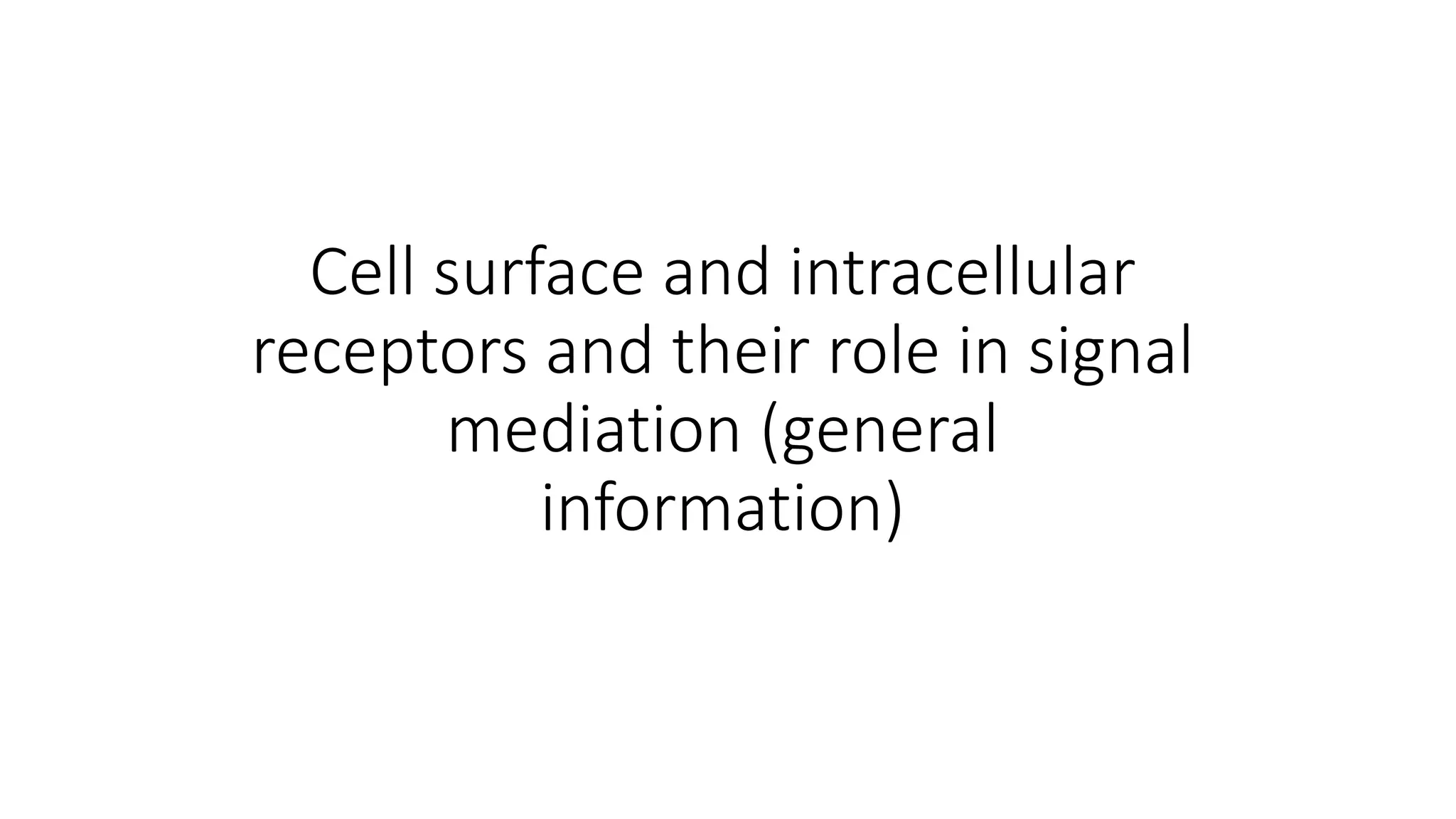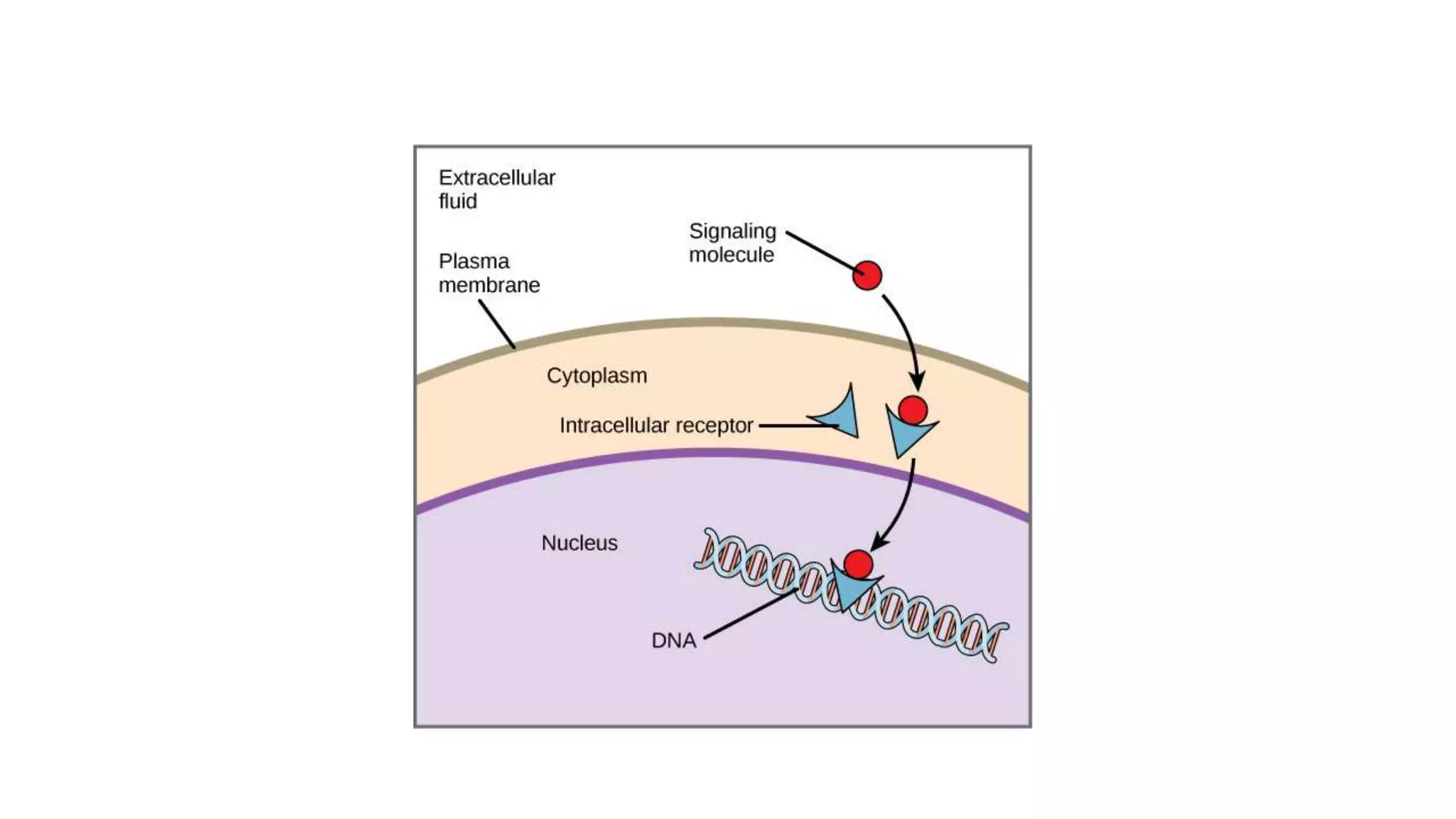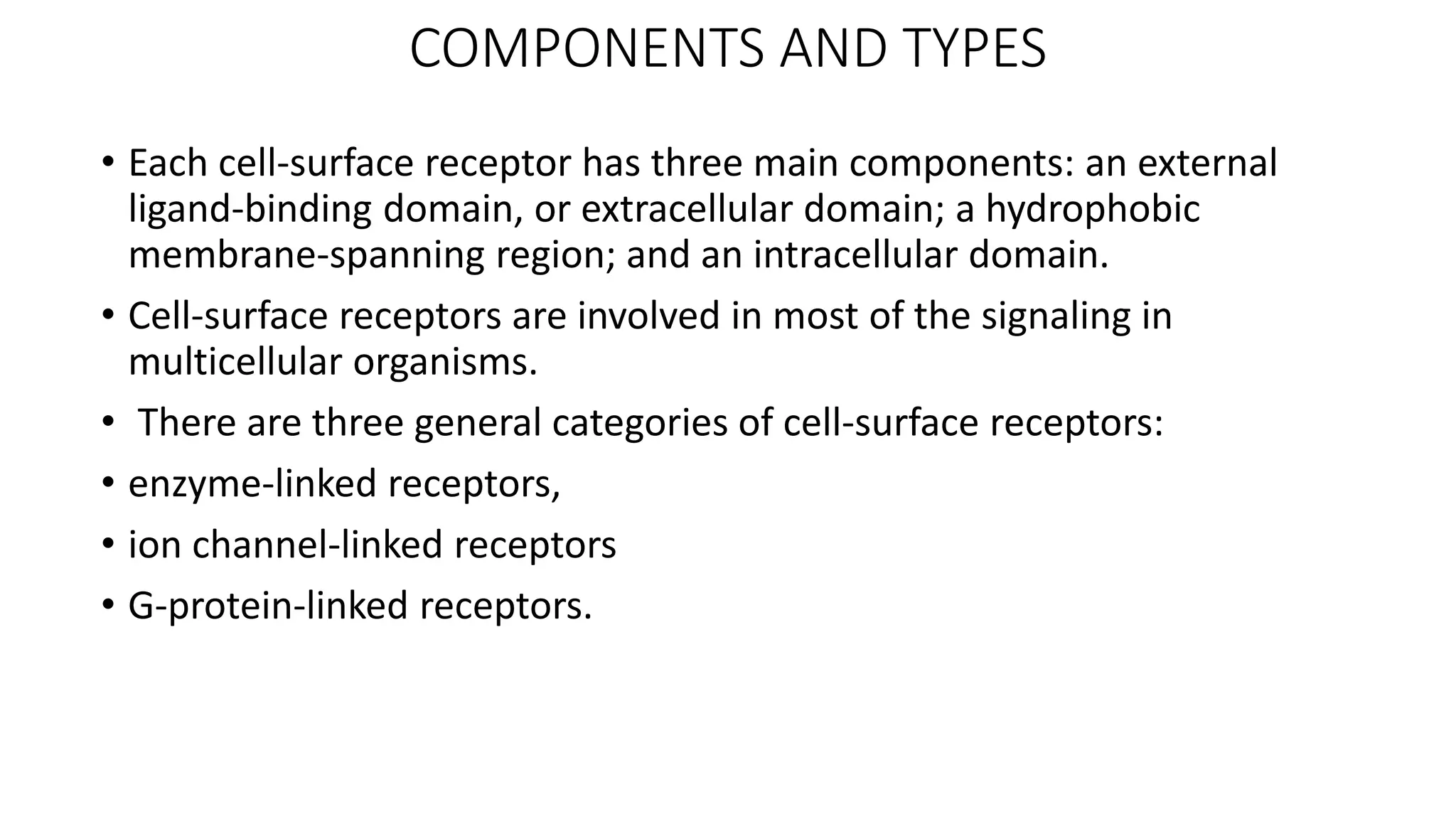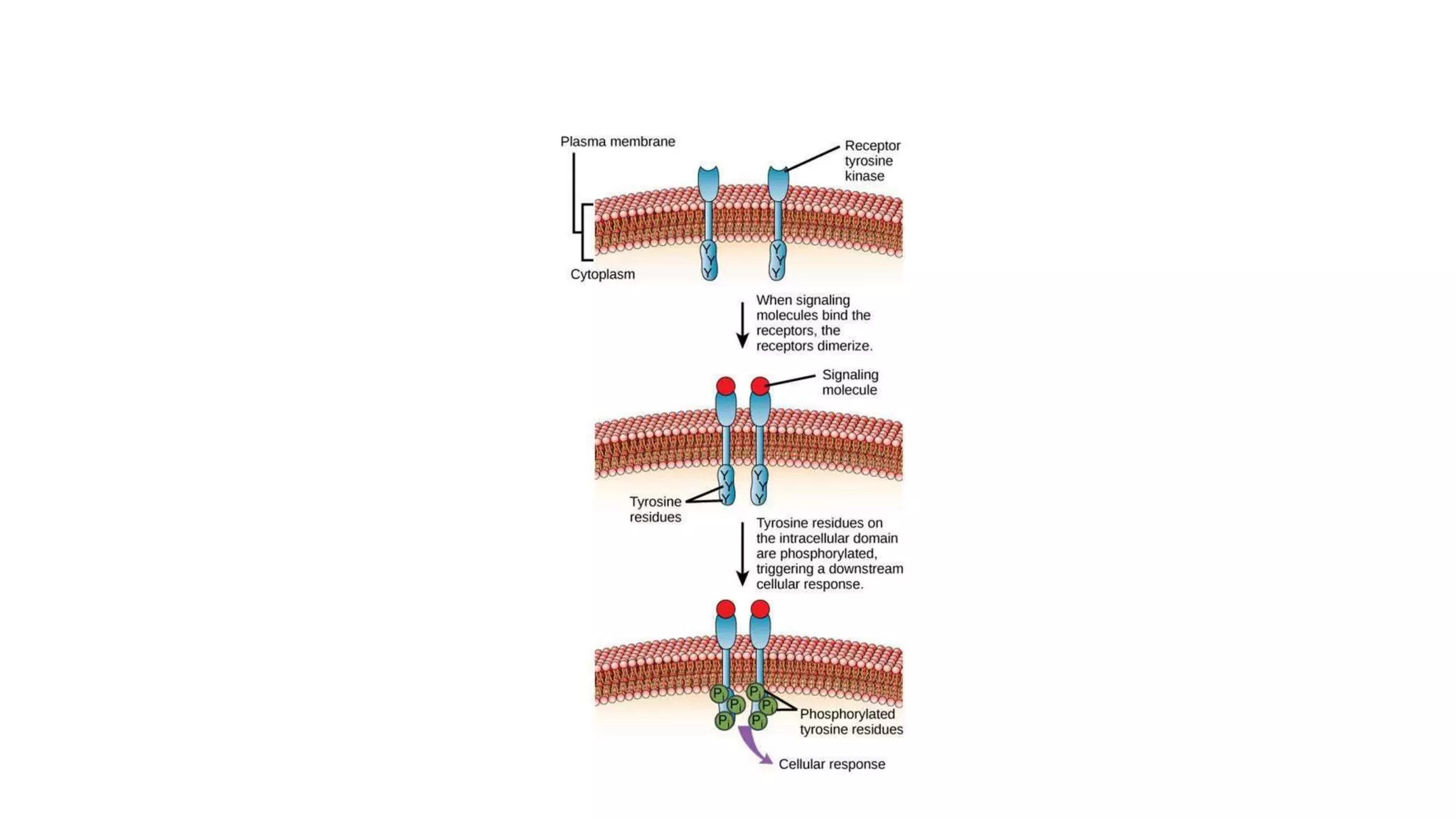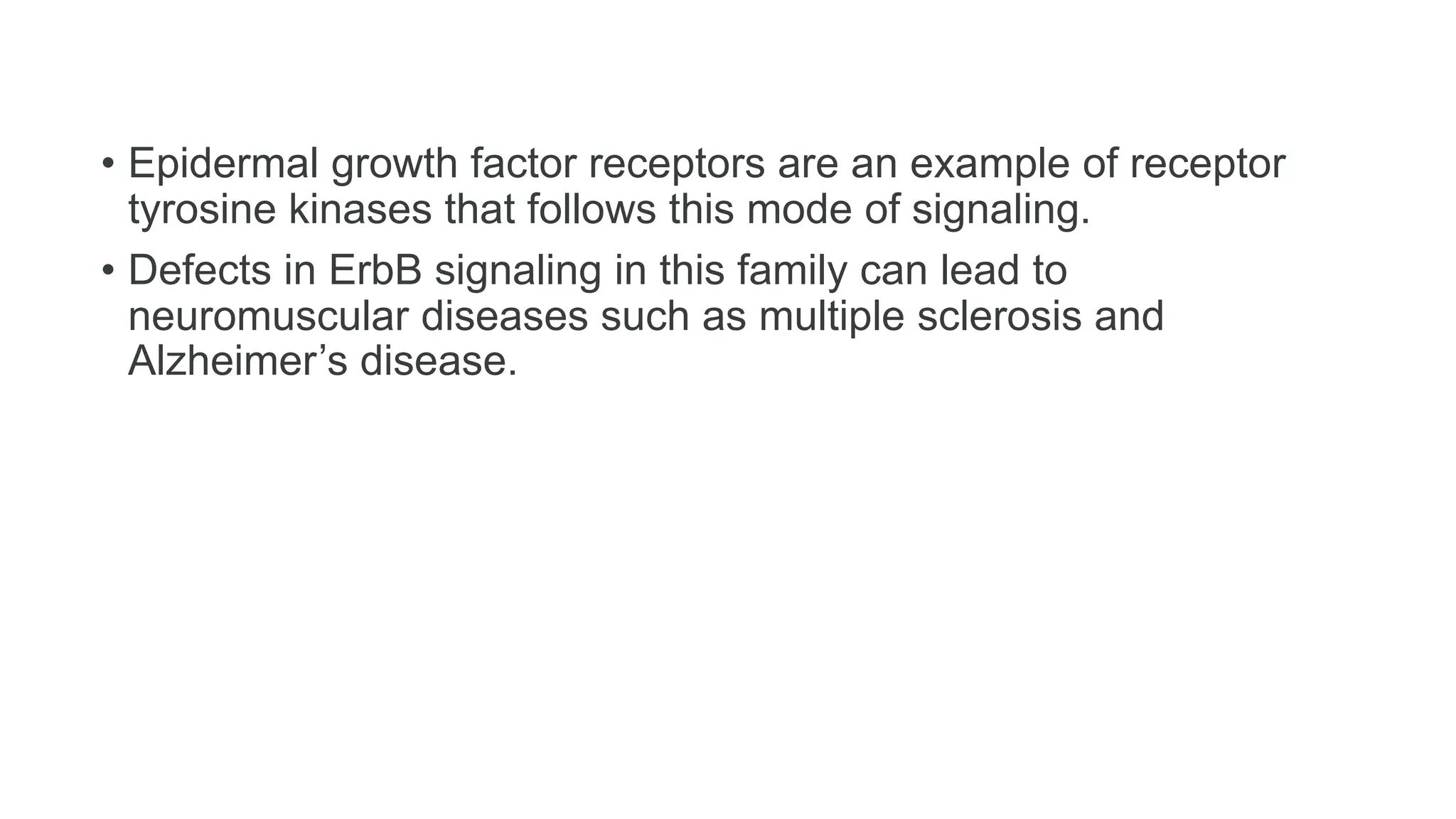Cell surface and intracellular receptors play important roles in signal transduction. There are two main types of receptors - internal receptors located in the cytoplasm that directly influence gene expression, and cell surface receptors that span the plasma membrane and convert extracellular signals into intracellular signals. Cell surface receptors include enzyme-linked receptors with intracellular enzyme domains, ion channel-linked receptors that open channels for ion flow, and G-protein-linked receptors that activate intracellular G-proteins to transmit signals. Defects in cell surface receptors can cause diseases.
